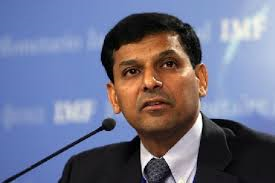“government is examining linking small savings interest rate to the market rate”:Raghuram Rajan
Depositors could feel the pinch post the Reserve Bank of India’s second quarter policy review despite the repo rate remaining unchanged. The RBI is now in talks with the government to review the small savings rate scheme.
“The government is examining linking small savings interest rate to the market rate,” RBI Governor Raghuram Rajan said. The market rates are headed south.
Small savings schemes include the National Savings Scheme, Kisan Vikas Patra, post office deposits, and Public Provident Fund. Their interest rates vary from 8.4 per cent for a one-year deposit to 9.3 per cent for the five-year Senior Citizens Savings Scheme.
In contrast, bank deposits are much lower on comparable maturities. Large lenders such as State Bank of India and ICICI Bank offered around 7.5 per cent for one year deposits.
“Today, despite the RBI slashing policy rates, banks are not able to fully pass on the benefit to borrowers as their cost of funds has not declined significantly,” says Rupa Rege Nitsure, group chief economist at L&T Financial Services.
“This is because banks’ deposits have to compete with other small savings instruments, which offer high interest rates. These rates are administered and do not follow the market movement. It has been a long-pending demand from banks to align interest rates on small saving schemes with market trends to create a level-playing field,” Nitsure said.
Banks worry savers will move to small savings schemes from bank deposits. They had suggested to the RBI that small savings schemes should be linked to the market to enable monetary transmission. That means a rate cut by banks in case the RBI lowers repo rate.
The central bank has noted that bank deposits have fallen more in the past one year compared to the lending rate. While the RBI reduced the repo rate by 125 bps to 6.75 per cent in 2015, the base rate — which is the benchmark for all loan rates — has fallen by 50 to 70 bps.
“Since the rate reduction cycle that commenced in January, less than half of the cumulative policy repo rate reduction of 125 bps has been transmitted by banks. The median base lending rate has declined only by 60 bps,” Rajan said.
Deposit rates have fallen by around 150 bps, for one year maturity. To add to the depositor’s woes, inflation has been inching up. Consumer price index-based inflation, or the retail inflation was at a four month high in October — at 5 per cent. Higher inflation diminishes the real returns to the saver.
The RBI targets 6 per cent inflation by January 2016 and 5 per cent by January 2017. To ensure banks pass on the benefits to customers, the RBI will announce a new formula to calculate the base rate.
Banks will have to take into account marginal cost of funds to calculate their base rate.
Kindly send reply or comments on this topic to [email protected]
Source:Thehindu




